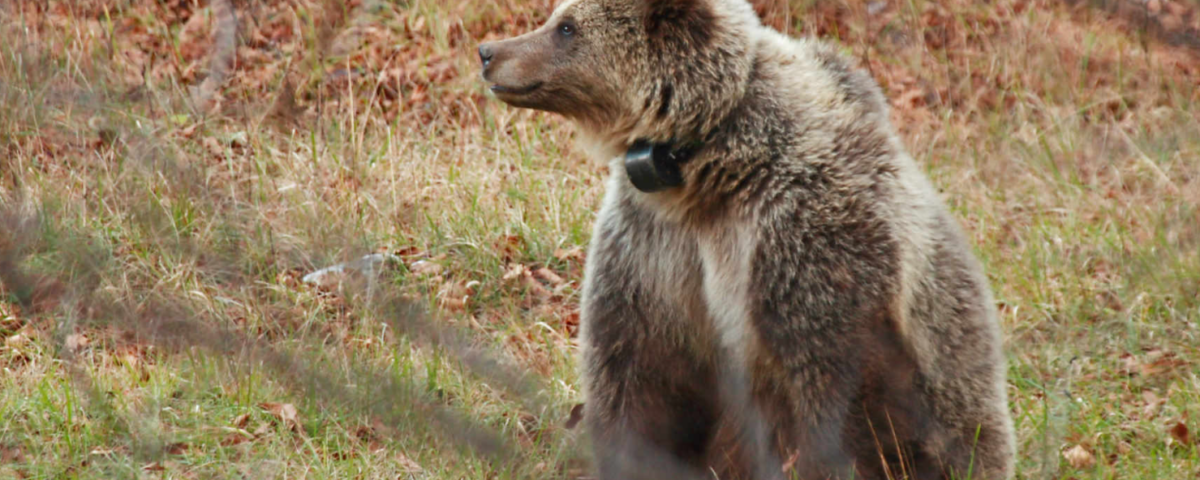Telemetry collars will provide new information about the behaviour of problem bear specimens

The State Nature Conservancy of the SR (SNC SR) has purchased 10 telemetry collars to be used by the Brown Bear Intervention Team. Thanks to the purchase, funded by the Environmental Fund, the Intervention Team will be able to increase the safety of selected areas where problem bear specimens occur. At the same time, the telemetry data will provide new information about their behaviour, which is currently lacking.
The new telemetry collars will be put on the bears to monitor their movement in the vicinity of human settlements. Selection of the bears on whom the collars will be placed is up to the Intervention Team. The collars will not restrict the bears’ movements in any way and, once deployed, they will transmit their GPS position at two-hour intervals. The telemetry data is important not only for the Intervention Team, but also for the SNC SR zoologists. The data obtained in this way will enable a more accurate identification and monitoring of the migration corridors of large carnivores and an evaluation of their feeding habits. Moreover, new data on the behaviour of problem specimens can also be obtained in this way.
The SNC SR has used funds from an Environmental Fund project to purchase the telemetry collars. The price of one collar (5,200 EUR) is appropriate for the functions and possibilities of collecting data on brown bears who have lost their shyness and changed their behavioural patterns.
The collars, which are made by Vectronic Aerospace, cannot be compared to the commonly available models. Some of the special features that the acquired collars have include IRIDIUM Satellite Service for recording the movements and GPS positions of brown bear specimens. Furthermore, the collar is able to record the hibernation of the bear or its death thanks to its special sensors. The activity sensor collects data at 5 minute intervals.
Another important feature that the collars have is the “drop-off” function. This means that the collar can be remotely disconnected from the monitored animal. It would thus not be necessary to immobilise the animal repeatedly in order to remove the collar. The “virtual fence” function will allow the members of the Intervention Team to detect when an animal crosses the set area and approaches human dwellings. In such case, members of the Intervention Team will immediately be notified by a text message and by an email and they will be able to adapt their intervention efforts accordingly.
Additional information:
The information leaflet for the collar can be downloaded here: VERTEX_PLUS_Flyer
More information on this topic can also be found in the interview with Michal Haring from the Intervention Team North for Aktuality.sk.
Information about GPS collars was also published by the TASR Press Agency in this article.
This press release was prepared by the Department of Communication and Promotion of the State Nature Conservancy of the Slovak Republic.
Initial photo – Producer’s website – Vertrex, Miha Krofel (Slovenia)
